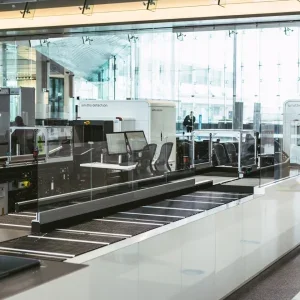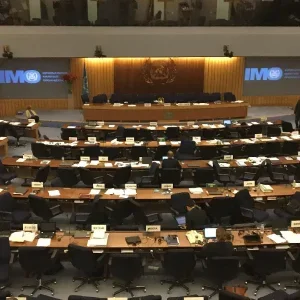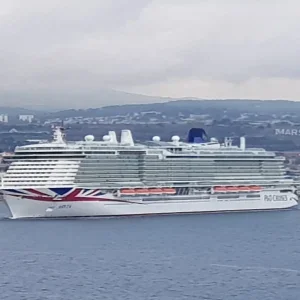
Burn less fuel. Run more cleanly. Keep uptime and reliability high. Do it all while keeping costs down. For cruise ship operators today, it seems like everything on that list is the top priority. If you’re constructing new vessels, you can take advantage of the latest features designed to address these issues. But what about existing ships — how do you meet your goals without investing in upgrades and retrofits?
Two technologies from Caterpillar are here to help. The first, Multi-Engine Optimiser (MEO), lays over the top of your vessel’s existing power management system, then uses proprietary performance maps and control algorithms to advise that system on which engines to operate and at what load. The second, Asset Intelligence (AI), is a total vessel monitoring solution that collects and analyzes data from onboard systems, then provides recommendations on when and how to take action.
Both MEO and AI are easy to integrate into both existing vessels and new ships, with minimal intervention and time required. Here are five ways they can benefit your operation:
1. Decrease fuel consumption
It takes an incredible amount of fuel to power today’s ships — more than a billion dollars’ worth annually for some larger cruise lines. What if you could save 2-3% (or more) of your fuel bill, potentially tens of millions of dollars, without making a single change to your engines or your vessel operations?
MEO makes that possible by using fuel maps to determine the best combination of engines and enabling dynamic asymmetrical load allocation — a fancy way of describing the ability to operate those engines at independent load factors. Precise fuel flow measuring for each individual engine results in the lowest possible fuel consumption for the entire system.
AI helps reduce fuel burn by analysing fuel and energy performance on board your ships, identifying operational practices and component maintenance issues that are increasing your fuel bill and recommending ways to address them.
2. Lower emissions
The current cruise ship order book includes a significant number of new vessels with liquified natural gas (LNG) as their primary fuel source. This approach dramatically reduces emissions, as LNG-powered engines emit virtually no soot or sulfur oxides and far less NOx and CO2 than those that burn diesel. That doesn’t help existing vessels, though. Repowering a cruise ship is difficult due to the location of the engines, and converting to LNG is even more of a challenge because of the need for tanks to store the liquid.
That’s where technology comes into play. By using MEO to run your current engines more efficiently or AI to monitor and improve fuel burn — or both — you can decrease fuel consumption significantly (see #1). For every liter of diesel fuel you save, you eliminate 2.68 kg of CO2. Technology makes it easy to operate more sustainably without having to undertake expensive machinery refits. (Bonus: AI’s automated monitoring makes compliance reporting fast and easy.)
3. Optimise maintenance
Maintenance is another area where technology can deliver big benefits. With MEO, you can consolidate more power into every hour of operation, resulting in fewer actual engine hours over the same time span. That allows you to extend maintenance and overhaul intervals. You can also use MEO to balance engine use by hours or fuel, either to synchronize overhaul intervals (so you can do all the work during one shutdown) or stagger intervals (so you can continue cruising without needing a shutdown at all).
With AI, you can move from hours-based to needs-based maintenance schedules. Because it tracks all the data generated by your ships’ systems, AI can tell you when maintenance and repairs are actually required, based on engine and vessel performance. That allows you to defer unnecessary maintenance for shipboard equipment that’s operating properly — waiting to schedule service when it has the least possible impact on your voyages, passengers and bottom line.
4. Increase reliability
The days of ships operating with two or three additional main engines are long gone. Due to cost pressures, most cruise lines no longer carry as much redundant power on board. That means any unscheduled downtime — or in some cases, even scheduled downtime — runs the risk of losing a voyage. Engine reliability is more critical than ever.
AI uses pattern recognition to learn about your ships’ systems so it can predict failures before they happen. That means your crew can take action immediately to fix an issue, and if any parts are needed, you can have them waiting in the right port. In addition to the data and alerts it provides on board, AI also sends additional analytics ashore, where your engineering experts can review any concerns and work with the ship’s crew or a Caterpillar Fleet Advisor to get ahead of problems.
5. Reduce your overall costs
All the benefits MEO and AI can deliver for your ships — reduced fuel consumption, fewer emissions, extended maintenance and overhaul intervals, and less downtime — add up to one big advantage: lower overall costs and maximum revenue capability for your operation. And if technology can make this big of a difference on your current vessels, just imagine what it can as part of an integrated solution for your new builds.






